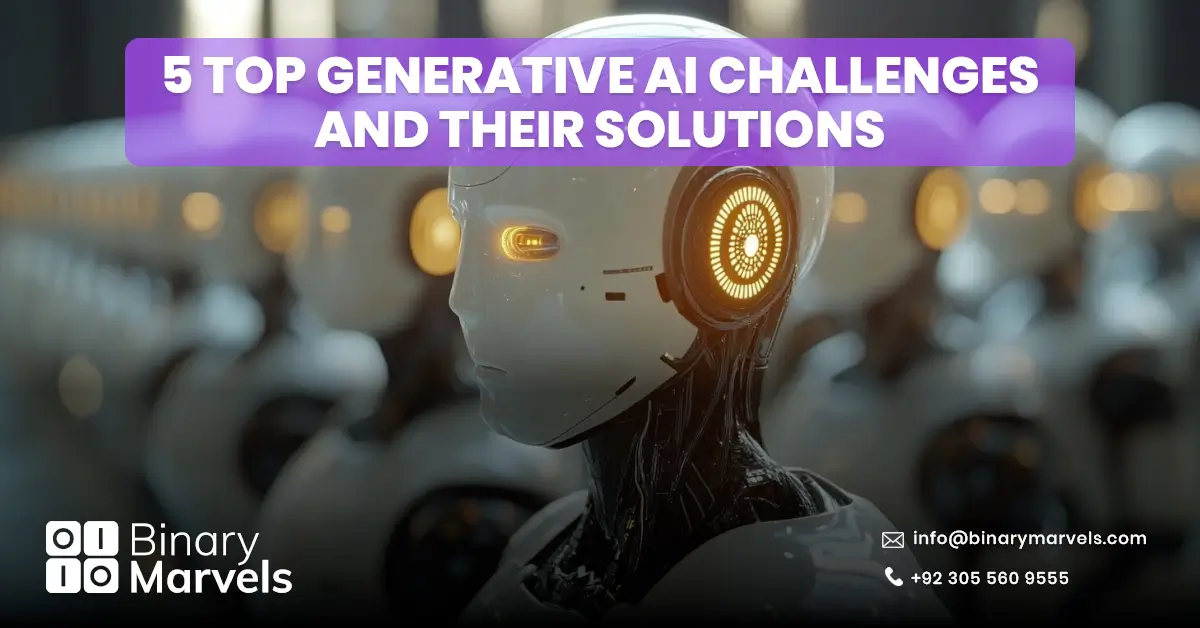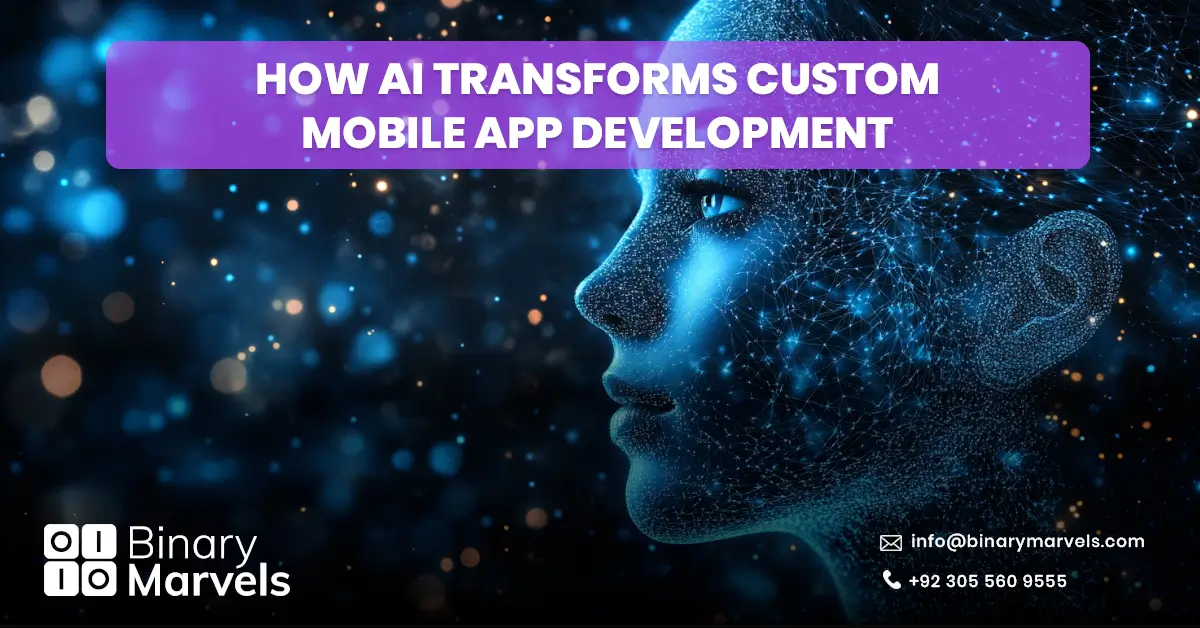
Artificial Intelligence (AI) is revolutionizing industries by automating complex tasks, optimizing processes, and providing innovative solutions to longstanding problems. However, choosing the right AI model for your application can be overwhelming due to the variety of available models. Each model type offers distinct strengths and weaknesses, making it essential to understand which one aligns with your objectives.
In this guide, we will walk you through the process of selecting the right AI model, discuss the types of AI models available, and outline the factors to consider when making your decision. Whether you’re developing an AI-powered recommendation system, a natural language processing (NLP) application, or a machine vision solution, this article will help you make informed choices.
At Binary Marvels, the Best Software House in Pakistan, we specialize in helping businesses identify and deploy effective AI solutions tailored to their specific needs. Let’s dive into the critical steps for selecting the perfect AI model for your application.
Also Read: Top 10 AI Companies in Pakistan
How to Choose the Right AI Model for Your Application?
1. Understand Your Problem and Data
Challenge:
The first step in choosing the right AI model is understanding the specific problem you want to solve and the type of data you are working with. Different AI models excel at different tasks, and the nature of your data will dictate which model is best suited for your application.
Key Questions to Ask:
- What problem are you solving (classification, regression, prediction, etc.)?
- What type of data do you have (images, text, structured data, unstructured data)?
- Do you need labeled data, or is the task unsupervised?
Solution:
By understanding the task at hand, you can select models accordingly. For example:
- For classification tasks (e.g., spam detection, fraud detection), supervised learning models like logistic regression or decision trees might be suitable.
- For regression tasks (e.g., predicting sales), linear regression or support vector machines (SVMs) may be ideal.
- For unsupervised tasks, like grouping or anomaly detection, clustering models (e.g., K-means) or autoencoders could work.
2. Consider the Model Complexity
Challenge:
AI models vary in terms of complexity. Some are relatively simple and interpretable, while others, such as deep learning models, can be very complex but offer better performance for intricate tasks like image or voice recognition.
Key Questions to Ask:
- How complex is the model, and do you have the necessary computational resources?
- Is the model interpretable enough for your use case (e.g., in healthcare or finance)?
Solution:
For simpler tasks, you may consider models like decision trees, random forests, or Naive Bayes, which are easier to interpret. However, for complex applications like image or speech recognition, you might need to implement deep learning models such as convolutional neural networks (CNNs) or recurrent neural networks (RNNs).
Also Read: A Guide to AI Voice Agent Development
3. Availability of Data
Challenge:
AI models depend on the availability of data. Some models, especially deep learning models, require vast amounts of data for training. If your dataset is small or unstructured, certain models may not perform well.
Key Questions to Ask:
- Do you have sufficient labeled data for supervised learning?
- Is your data clean and well-structured, or do you need to perform significant preprocessing?
Solution:
If you have limited labeled data, consider using unsupervised learning or semi-supervised learning. In the case of sparse data, transfer learning (where a pre-trained model is fine-tuned on your specific data) can also be highly effective.
4. Evaluate the Performance and Accuracy
Challenge:
Once you’ve selected a model, evaluating its performance is critical. Different AI models may perform better or worse depending on the dataset, application, and metrics used to measure success.
Key Questions to Ask:
- What performance metrics are important (accuracy, precision, recall)?
- How does the model handle large datasets or scale with new data?
Solution:
For tasks like classification, measure your model’s performance using metrics like accuracy, precision, recall, and F1 score. For regression, use mean absolute error (MAE) or root mean square error (RMSE). You can also assess model scalability by testing its performance with increasing dataset sizes and checking inference time.
5. Consider the Cost and Resources
Challenge:
Training AI models, especially deep learning models, can require substantial computational resources, including GPUs, cloud infrastructure, and storage. It’s crucial to assess if the resources needed are within your budget.
Key Questions to Ask:
- Do you have the computational resources required to train the model?
- What is the long-term operational cost to maintain and run the model?
Solution:
If you are constrained by resources, consider using pre-trained models or opting for cloud-based AI platforms like AWS, Google Cloud, or Microsoft Azure. These platforms offer scalable infrastructure, so you can avoid heavy upfront costs.
Types of AI Models
Understanding the different types of AI models available is crucial when selecting the right one for your application. Below are the main categories of AI models:
1. Supervised Learning Models
These models are trained on labeled datasets, where the input data has corresponding output labels. Supervised learning is commonly used for classification and regression tasks. Popular models in this category include:
- Linear Regression: Used for predicting continuous outcomes.
- Logistic Regression: Used for binary classification tasks (e.g., yes/no outcomes).
- Support Vector Machines (SVM): Effective for both classification and regression tasks.
- Decision Trees and Random Forests: Widely used for classification tasks due to their simplicity and interpretability.
2. Unsupervised Learning Models
These models are trained on unlabeled data and are used to find hidden patterns or relationships in the data. They are useful for clustering, dimensionality reduction, and anomaly detection. Popular models in this category include:
- K-Means Clustering: Used for segmenting data into clusters based on similarities.
- Hierarchical Clustering: Builds a tree of clusters for data segmentation.
- Principal Component Analysis (PCA): Used for reducing the dimensionality of data while retaining as much information as possible.
3. Reinforcement Learning Models
Reinforcement learning is a type of machine learning where an agent learns by interacting with its environment, taking actions, and receiving rewards or penalties. It is often used in robotics, game-playing AI, and self-learning systems.
- Q-Learning: A type of model-free reinforcement learning algorithm used for decision-making.
- Deep Q-Networks (DQN): Combines deep learning and Q-learning for more complex problems, often used in gaming or robotics.
4. Deep Learning Models
These models are a subset of machine learning that use neural networks with multiple layers (hence the term “deep”) to learn from large amounts of data. They are used for complex tasks like image recognition, speech processing, and natural language understanding.
- Convolutional Neural Networks (CNNs): Primarily used for image classification and object detection.
- Recurrent Neural Networks (RNNs): Used for tasks involving sequential data, such as language modeling and speech recognition.
- Generative Adversarial Networks (GANs): Used to generate new, synthetic data that mimics real data, often applied in image generation and enhancement.
5. Natural Language Processing (NLP) Models
NLP models are designed to process and understand human language. They are used in applications like chatbots, translation systems, and sentiment analysis.
- BERT: A transformer-based model used for understanding context in natural language.
- GPT: A generative model used for text generation, translation, and summarization.
- Transformer Networks: Highly effective for tasks like machine translation and text generation.
Why Choose Binary Marvels for AI Development?
At Binary Marvels, we offer AI development services that actually make sense for your business. Whether you’re just getting started with AI or looking to improve an existing system, we’ve got you covered.
- We build AI solutions that fit your goals, not just flashy tech.
- Our team knows their stuff—from machine learning to deep learning and NLP.
- We work with your data to make sure the model performs well in the real world.
- Whether you prefer cloud or on-site deployment, we’ll make it work.
- From the first idea to launch and beyond, we handle the full development process.
If you’re serious about using AI to solve real problems and boost your business, Binary Marvels is here to help.
FAQs
How do I choose the right AI model for my problem?
Start by understanding the task (classification, regression, NLP) and the data type you have. Then, choose models based on complexity, interpretability, and scalability.
What if I don’t have enough data?
If data is scarce, consider using transfer learning or unsupervised learning models that don’t require as much labeled data.
Which AI model is best for image classification?
Convolutional Neural Networks (CNNs) are the best choice for image classification and object detection tasks.
Conclusion
Choosing the right AI model for your application involves a deep understanding of your problem, the available data, the complexity of the model, and the resources required. With the right strategy, AI can solve complex business problems, automate processes, and unlock new opportunities for innovation.
At Binary Marvels, the Best Software House in Rawalpindi, we specialize in helping businesses implement AI solutions that are both scalable and cost-effective. Whether you’re developing an image recognition system, a predictive analytics model, or a chatbot, we have the expertise to guide you through every step of the process.
Supercharge Your Business with AI Today!
As a trusted AI Development Company in Pakistan, we deliver cutting-edge AI Development Services designed to streamline your operations and enhance customer engagement.
Don’t wait—connect with us now and take your business to the next level!









